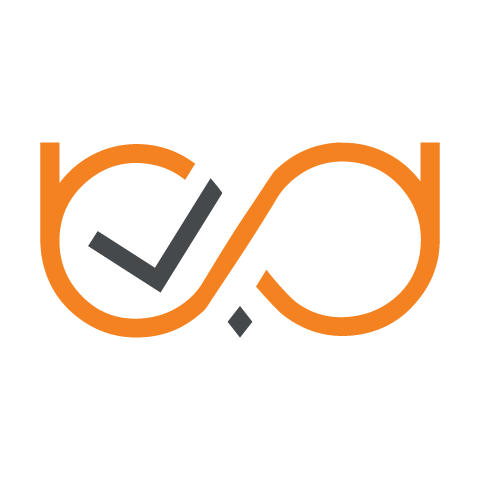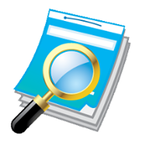What Is Proofreading Software?
Proofreading software is an effective tool for helping individuals and businesses enhance the quality and correctness of their written content. It detects spelling, grammar, punctuation, and other mistakes and recommends modifications to sentence structure and word choice. One of the primary advantages of proofreading software is the ability to save time and effort.
Rather than manually going through a document for flaws, the program may instantly scan and detect them, avoiding the need for arduous and time-consuming proofreading. In addition to detecting simple errors, some proofreading software includes additional functions like style suggestions, vocabulary augmentation, and plagiarism detection. These elements can improve the overall quality and readability of the written text.
Proofreading software is particularly useful for corporations and organizations since it ensures that all written materials are free of errors and present a professional image. This is especially important for marketing materials, web content, and other customer-facing papers. When looking for proofreading software, accuracy, ease of use, and extra features like language support and integration with other writing tools are all important considerations.
It's also worth noting that some software is available as a one-time purchase, while others require a subscription. Overall, proofreading software is a useful tool for everyone who wants to improve the quality of their written work. With its time-saving capabilities and advanced features, it is a must-have for people and businesses seeking to create error-free and professional written products.
What Are The Recent Trends In Proofreading Software?
In the world of written communication, accuracy and clarity are paramount. Whether for business or personal reasons, having error-free content is critical. Here is when proofreading software comes in handy. The market for proofreading software has grown significantly over the years, as demand for high-quality writing has increased.
One of the latest trends in proofreading software is the use of artificial intelligence (AI) and machine learning (ML) technologies. This has transformed the way proofreading is done by enabling more accurate and advanced error identification and correction. AI-powered proofreading software can assess sentence structure, grammar, vocabulary, and tone to provide changes and fixes, making the entire proofreading process more efficient and reliable.
Another trend is the increased use of online proofreading tools. With the rise of remote work and online collaboration, having access to a cloud-based proofreading tool has become essential for many individuals and companies. These online systems are convenient and flexible, allowing users to proofread papers from any device with an internet connection.
Furthermore, there has been a shift toward more inclusive proofreading software that supports multiple languages and writing styles. This approach emphasizes the wide global audience and the importance of competent proofreading in multiple languages. Some software even includes translation capabilities, allowing non-native speakers to write error-free writing.
Furthermore, proofreading software has progressed beyond simply checking for spelling and grammar problems. Many of these tools now include extra capabilities like plagiarism detection, style advice, and readability evaluations. These new features give users a more complete proofreading solution, guaranteeing that their work is not just error-free, but also interesting and well-written.
Finally, there has been an increased emphasis on the user experience in proofreading software. Many software developers are increasingly focusing on designing user-friendly interfaces that provide easy navigation and access to various functionalities. This trend emphasizes the value of user happiness and seeks to make the proofreading process as simple and seamless as possible.
Benefits Of Using Proofreading Software
Proofreading software can benefit both individuals and organizations. The software's powerful technology and features enable efficient and precise proofreading, saving users time and boosting the overall quality of their writing.
Here are some of the major advantages of using proofreading software.
1. Error-Free Writing: One of the most evident advantages of using proofreading software is its ability to detect spelling and grammar mistakes. With tools such as spell check and grammar check, the software can swiftly scan over a piece of writing and identify any errors, ensuring that the final result is free of errors.
2. Improved Writing Skills: Proofreading software can help users improve their writing skills by flagging problems and offering correction ideas. Users can learn from their mistakes and improve their writing skills over time as the software highlights typical errors and opportunities for improvement.
3. Time-Saving: Manually proofreading a piece of writing can be time-consuming and boring. With proofreading software, the procedure becomes lot faster and more efficient. The software can scan through a page in seconds, freeing up users' time and energy for other vital activities.
4. Consistency: Consistency is essential in written work, whether it is a report, an essay, or an email. Proofreading software can help verify that a document's spelling, grammar, and style are consistent throughout. This is especially useful for firms that need to maintain a professional and consistent tone in written communications.
5. Customization: Many proofreading software applications have customization options, which allow users to adjust the software to their individual requirements. Setting personal writing goals, selecting preferred spellings or style guides, and even creating a personal dictionary are all examples of this.
6. Accessibility: Since most proofreading software is cloud-based, it may be accessed from any device with an internet connection. This makes it easier for customers to proofread their work on the go, whether they are at home, in the workplace, or traveling.
7. Cost-Effective: Hiring a professional proofreader can be costly, particularly for firms that generate a large amount of written material. Proofreading software is a more cost-effective solution because it eliminates the need for human proofreaders.
Important Factors To Consider While Purchasing Proofreading Software?
When it comes to choosing proofreading software, it can be difficult to navigate the different options on the market. To ensure that you make the best decision for your needs, there are numerous crucial considerations to consider before making a purchase. These criteria will influence not just the quality of the program, but also its efficacy in assisting you in improving your writing.
Let's look at the key elements to consider while selecting proofreading software.
1. Accuracy And Reliability: The most critical considerations when selecting proofreading software are accuracy and reliability. The software should be capable of accurately detecting and correcting spelling, grammatical, and punctuation issues in your work. It should also reliably identify potential faults and make suitable suggestions for improvement.
2. Language Support: If you are a non-native speaker or need to write in many languages, make sure you select proofreading software that supports multiple languages. Before making a purchase, ensure that the software supports the languages you need.
3. User-Friendly Interface: The software's interface should be simple to use and understand. It should also provide useful tutorials and guidelines to help with program installation and use.
4. Integration With Writing Platforms: Select proofreading software that works perfectly with your preferred writing platform, such as Microsoft Word or Google Docs. This will save you time and effort when switching between programs when writing or proofreading.
5. Customization Options: Each writer has a unique writing style, and the program should be able to accommodate it. Look for software that allows you to add personal dictionaries, create style guides, and customize suggestions.
6. Advanced Features: In addition to basic proofreading skills, some software may provide plagiarism detection, vocabulary development, and tone analysis. Consider your individual needs and select software with capabilities that meet them.
7. Price And Value For Money: Proofreading software can range from free to pricey subscription-based choices. It is critical to analyze the software's features and benefits before deciding whether it is worth the money.
8. Customer Help: If you have any problems with the software, it is critical to have dependable customer help. Look for software that provides timely and helpful customer assistance by email, phone, or live chat.
9. Demo Or Free Trial: Before making a purchase, it is recommended that you test the software using a demo or free trial. This will allow you to evaluate its features and determine if they match your needs.
By keeping these key considerations in mind when selecting proofreading software, you can make an informed selection and select the finest option for your writing requirements. Remember to investigate and evaluate several software options to discover the one that best fits your budget and requirements. Happy proofreading!
What Are The Key Features To Look For In Proofreading Software?
When deciding on the best proofreading software for your needs, you should examine the features that will make your work more polished and error-free.
Here are the important components you should look for in proofreading software to ensure a smooth and effective editing process:
1. Spelling And Grammar Check: While this is a typical feature in most proofreading software, it is critical that it includes advanced algorithms to detect even the most complicated grammatical problems and misspellings.
2. Style And Tone Suggestions: A decent proofreading software should provide guidance on overall writing style and tone. This may include suggestions for more formal language, active voice, and reducing wordiness.
3. Plagiarism Checker: For academic or professional writers, a plagiarism checker is a necessary function. This allows you to ensure that your writing is unique and does not duplicate any already published information.
4. Customizable Settings: Look for software that lets you change your preferences and configurations. This can include preferred spelling variations (for example, American vs. British English) as well as specific user profiles for various writing styles.
5. Integration With Numerous Platforms: To ensure a smooth proofreading process, choose software that can be integrated with a variety of platforms, such as word processing software, email, and browsers.
6. Multiple Language Support: If you are a multilingual writer, you should look for software that can detect problems and make suggestions in multiple languages.
7. Contextual Feedback: Many modern proofreading software now provides contextual feedback, which means it can recommend modifications depending on the entire sentence rather than just specific words.
8. User-Friendly Interface: A user-friendly interface makes proofreading easier and more pleasant. Look for software that is simple to use and has a clear and succinct display of faults and suggestions.
9. Customer Support: While most proofreading software is simple to use, having access to customer support for any queries or issues that emerge is always beneficial.
Keep these crucial aspects in mind when searching for the best proofreading software. With the correct tool, you may boost the overall quality and believability of your work, making it a worthwhile investment for any writer.
Why Do Businesses Need Proofreading Software?
In today's fast-paced business world, when communication and branding are key, organizations must ensure that their written content is error-free and professional. Here's where proofreading software comes in. Proofreading software is an invaluable resource for organizations of all sizes since it provides a variety of capabilities to improve the quality of their written content.
It not only checks for spelling and grammar errors, but also improves the general clarity, consistency, and readability of the text. One of the most important reasons organizations need proofreading software is to maintain a strong and professional image. A single typo or grammar problem can have a detrimental influence on a company's credibility and reputation, potentially costing it chances.
Businesses can use proofreading software to verify that their content is error-free, leaving a positive impression on clients and customers. Additionally, proofreading software can help firms save time and money. Rather of spending hours double-checking every word and sentence, proofreading software can swiftly scan enormous amounts of material and spot errors or inconsistencies, allowing organizations to focus on more vital duties.
Another advantage of employing proofreading software is that it promotes brand consistency. When a company has several people working on written content, it can be difficult to verify that everyone uses the same writing style and tone. Businesses can use proofreading software to establish and maintain a uniform tone in all of their written content.
Furthermore, proofreading software can raise the overall quality of written content. It includes advanced capabilities like contextual spelling check and suggestions for sentence structure and word choice, which can help organizations increase the effectiveness of their content and make it more engaging for readers. In today's worldwide marketplace, firms communicate with people from all over the world.
Proofreading software also supports many languages, making it easier for organizations to engage with foreign clients and partners. Overall, proofreading software is a crucial tool for businesses that want to project a professional and error-free image, save time and money, assure brand consistency, and improve the overall quality of their written content. It is a good investment for any firm that wants to boost its communication and branding initiatives.
How Much Time Is Required To Implement Proofreading Software?
When it comes to implementing proofreading software, the time required depends on a number of things. These criteria include your organization's size, the specific software used, and the extent of customisation and training required for your workforce. In average, setting up and installing proofreading software can take a few hours to a few days.
This includes downloading the program, configuring user permissions, and integrating it into your existing systems. Once the software is installed, the time necessary for actual implementation will vary depending on the complexity of your papers and the amount of editing and proofreading required. Smaller firms with simple documents may have a lower learning curve and an implementation procedure that takes only a few days.
However, larger firms or those with more complicated papers may require many weeks or even months to completely integrate the program and teach your team on its features and functionalities. This may also include any necessary customizations to meet your individual requirements and workflows. To guarantee a seamless implementation process, set aside enough time for comprehensive team training and onboarding.
This will not only help them become more familiar with the program, but will also improve its efficacy and efficiency. Overall, the time necessary for implementation will be primarily determined by your organization's individual demands and processes. It is essential that you thoroughly investigate and understand the software's capabilities and requirements before making a purchase to guarantee a smooth and successful implementation.
What Is The Level Of Customization Available In Proofreading Software?
Proofreading software includes a variety of beneficial tools that can assist users enhance their written content. However, one factor that distinguishes different proofreading programs is the level of personalization they provide. Customization is crucial because it enables users to modify the software to their individual requirements and tastes.
In this post, we will look at the many levels of customisation available in proofreading software so you can make an informed selection when purchasing it.
1. Grammar And Spelling Check Customization: The most basic degree of customization in proofreading software is the option to specify which types of problems and faults the software should highlight. Users can usually choose from grammar, spelling, punctuation, and style. This enables writers to concentrate on specific areas where they want to improve their work.
2. User lexicon: Many proofreading software packages allow you to develop your own personal lexicon. This is useful when dealing with words that are not recognized by the software's standard dictionary. Users can add these words to their personal dictionary to avoid them being marked as mistakes in the future.
3. Style Preferences: Another level of customization offered by proofreading software is the opportunity to select a certain writing style. This could be academic, business, or artistic writing. By selecting their chosen style, users can ensure that the software provides ideas and corrections that are acceptable for their work.
4. Personal Writing Goals: Some advanced proofreading software enables users to choose personal writing objectives, such as word count, readability level, or target audience. Setting these goals allows the software to provide more targeted suggestions and feedback on the user's writing.
5. Language Preferences: Because proofreading software is used by people from various linguistic backgrounds, many of them allow for customization of multiple languages and dialects. This ensures that the software can correctly identify faults in writing based on the language used.
Which Industries Can Benefit The Most From Proofreading Software?
Proofreading software is a valuable tool for individuals and businesses in a variety of industries since it enables more accurate and efficient proofreading of written materials. However, proofreading software can be quite beneficial in certain areas.
Let's explore, we'll look at which industries can benefit the most from proofreading software and how it can help them with their daily operations.
1. Publishing Industry: The publishing sector is primarily reliant on written content, whether it is books, periodicals, or internet articles. With the large volume of information being created, proofreading software can assist editors and authors in quickly detecting and correcting problems, saving time and resources. This is especially vital in the fast-paced publishing industry, where deadlines are everything.
2. Marketing And Advertising Industry: As firms work to develop attractive and error-free promotional content, proofreading software can be a great asset. Proofreading software guarantees that all text, from brand messaging to website content, is precise and error-free, allowing firms to present a professional image.
3. Education Industry: Proofreading software benefits both teachers and students. Teachers may use it to swiftly review and correct students' written papers, while students can use it to enhance their writing skills. This is particularly useful for non-native English speakers who may struggle with grammar and spelling.
4. Legal Industry: The legal sector requires a high level of precision and attention to detail in all written papers, since even minor mistakes can have serious effects. Proofreading software can help lawyers and legal professionals identify and repair errors in legal contracts, briefs, and other written materials.
5. Business And Corporate Industry: Written communication is critical in the business world, whether it is through emails, reports, or presentations. Proofreading software can assist professionals in this area by ensuring that their written content is polished and error-free, resulting in more effective and professional communication.
Conclusion
To summarize, proofreading software is an indispensable tool for anyone trying to improve the quality and accuracy of their work. Proofreading software, with its comprehensive capabilities and user-friendly interface, provides a convenient and effective method for identifying and correcting problems in your documents. It not only saves time and work, but also improves the general quality and professionalism of your writing.
Thanks to our detailed buyer's guide, you now have a better idea of the essential features and considerations to consider when selecting the finest proofreading software for your requirements. Whether you are a student, a professional, or simply want to improve your writing skills, investing in reputable proofreading software is a prudent move that will pay off in the long term.
With so many options available on the market, it is critical to carefully assess each software and select one that meets your individual needs. To select the best fit for your needs, consider accuracy, speed, cost, and additional features. Remember that the correct proofreading software can significantly improve the quality and effectiveness of your written communications.
We hope this buyer's guide has provided you with enough knowledge and insights to make an informed decision and invest in the best proofreading software for your specific needs. Now, use proofreading software to take your work to the next level.






















